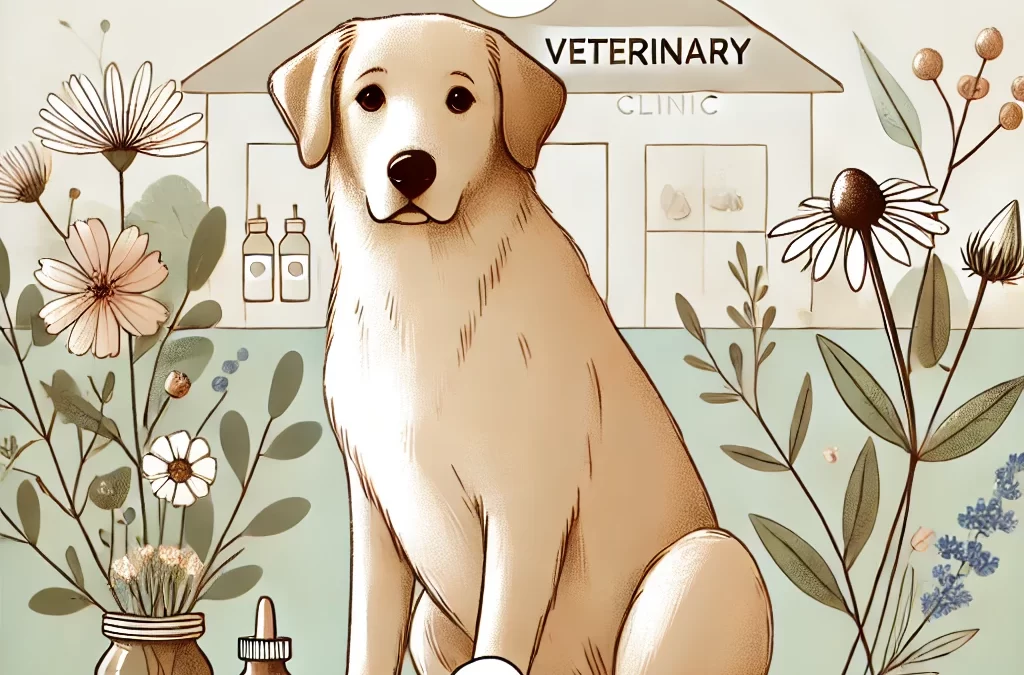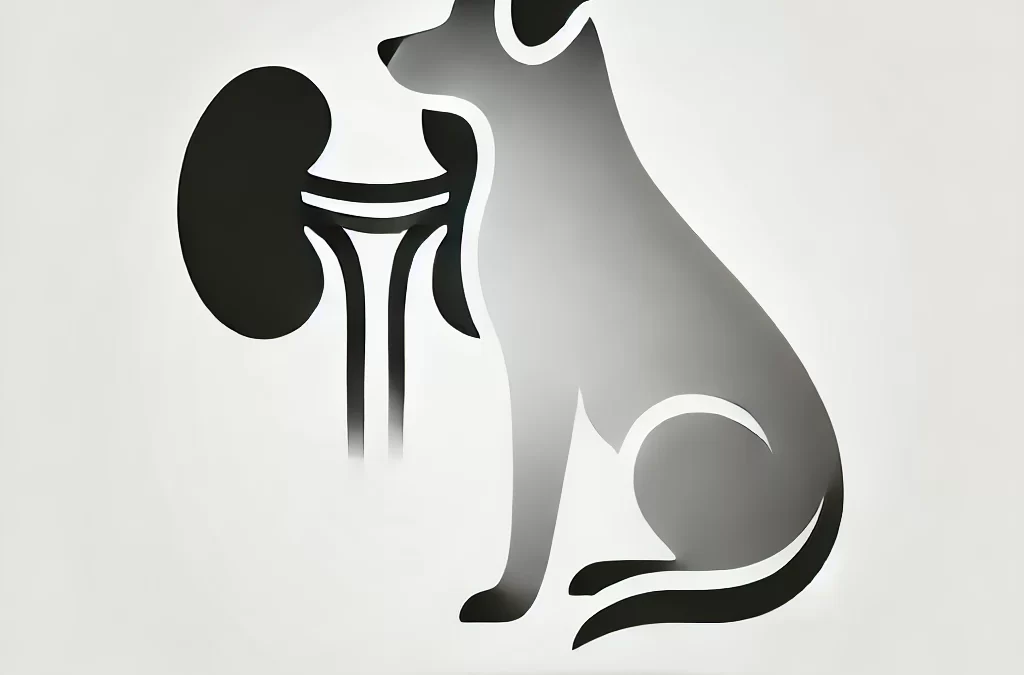
經過 TCMVET | 2024 年 12 月 3 日 | 狗癌症和腫瘤
血管外皮細胞瘤是狗身上一種罕見的軟組織腫瘤,由周細胞(血管周圍的細胞)引起。雖然這些腫瘤通常生長緩慢且局部化,但它們在手術切除後容易復發,這使得它們成為獸醫腫瘤學的獨特挑戰。本文深入探討了血管外皮細胞瘤的性質、診斷以及有效管理它們的突破性方法。
什麼是狗血管外皮細胞瘤?
血管外皮細胞瘤通常見於中年至老年犬的皮膚或皮下組織。這些腫瘤可能表現為:
- 皮下堅硬、可移動的腫塊
- 腫塊大小不等,有時表面會潰爛
- 進展緩慢但侵入性生長
這些腫瘤通常位於四肢,很少轉移,但會顯著影響狗的活動能力和舒適度。
需要注意的不常見跡象
雖然血管外皮細胞瘤最初看起來可能無害,但某些症狀應該引起關注:
這些微妙的跡象通常先於更明顯的腫瘤生長跡象。
創新的診斷方法
傳統的診斷方法包括細針抽吸或活檢,然後進行 X 光或超音波等成像。然而,獸醫診斷的進步現在可以:
- CT 掃描:提供腫瘤範圍的詳細影像。
- 3D 腫瘤建模:用於計劃精確的手術介入。
- 液體活檢:一種檢測血液中腫瘤特異性標記物的尖端方法,提供非侵入性監測。
重新思考治療方案
雖然手術仍然是血管外皮細胞瘤治療的黃金標準,但正在出現創新方法來提高療效:
- 先進的手術技術:雷射手術和電外科手術透過實現更清潔的邊緣來降低復發風險。
- 免疫療法:刺激免疫系統針對手術後殘留的癌細胞。
- 冷凍療法:當手術不可行時,冷凍腫瘤細胞以進行局部控制。
- 光動力療法:使用光激活藥物來破壞癌細胞。
這些新穎的方法為傳統手術可能具有挑戰性或不足的情況提供了替代方案。
自然療法和支持療法
作為傳統治療的補充,整體護理越來越受到關注。這些包括:
- 草藥補充劑:黃耆和藥用蘑菇等成分可增強免疫力,並可能抑制腫瘤生長。
- 針刺:有助於減輕疼痛並改善整體健康。
- CBD油:以其抗炎和鎮痛特性而聞名,可以幫助狗狗應對不適。
結合適當的營養和定期鍛煉,這些療法有助於提高生活品質。
安寧療護的力量
對於患有晚期或復發性血管外皮細胞瘤的狗,安寧療護著重於舒適度:
- 透過藥物或雷射療法控制疼痛
- 行動輔助工具,如安全帶或輪椅
- 豐富情感以維持心理健康
當主人知道他們在充滿挑戰的時期為寵物提供愛和關懷時,他們常常會感到安慰。
為什麼血管外皮細胞瘤需要創新
血管外皮細胞瘤挑戰獸醫和寵物主人的思維超越傳統的治療方法。低轉移潛力提供了一個獨特的機會來嘗試標靶治療和整體方法,而不會影響狗的生活品質。
透過採用新興技術和綜合護理,血管外皮細胞瘤的治療可以發展成為更個人化和有效的過程,為狗狗提供舒適和充實的生活的最佳機會。

經過 TCMVET | 2024 年 12 月 3 日 | 狗癌症和腫瘤
狗的脊椎癌是一種罕見但嚴重的疾病,會影響脊椎或脊髓,可能導致虛弱症狀。雖然傳統的獸醫方法通常涉及手術、放射或化療,但越來越多的人轉向優先考慮生活品質的綜合和自然療法。本文探討了狗狗脊椎癌的獨特挑戰,並介紹了治療的其他觀點。
什麼是狗的脊椎癌?
當異常細胞在脊椎中不受控制地生長,影響骨骼、神經或周圍組織時,就會發生脊椎癌。常見類型包括:
- 骨肉瘤:影響脊椎骨骼。
- 淋巴瘤:可能會滲入脊髓或椎骨。
- 腫瘤:腫瘤壓迫脊髓或神經。
這些腫瘤可能會導致疼痛、行走困難、癱瘓或失禁,這取決於它們的位置。
需要注意的不常見症狀
脊椎癌的早期症狀通常很微妙,並且可能與其他情況相似:
- 行走時轉移重心或偏向一側
- 姿勢改變,例如弓背
- 沿著脊柱觸摸的敏感性
這些指標雖然不是明確的,但值得獸醫立即關注。
重新思考診斷與預後
X 光、MRI 和活檢等傳統診斷方法可以確認脊椎癌的存在,但它們是侵入性的且成本高昂。在某些情況下,預後可能很嚴峻,導致許多寵物主人尋求侵入性較小且更全面的方法。了解狗的具體狀況、整體健康狀況和生活品質對於確定最佳的前進道路至關重要。
綜合和自然的方法
創新方法越來越受到寵物主人和獸醫的歡迎,他們希望補充或取代傳統治療方法。這些包括:
- 針刺:幫助控制疼痛並改善神經功能。
- 草藥療法:薑黃和乳香等成分可以減少發炎並減緩腫瘤生長。
- CBD油:因其緩解疼痛和抗炎特性而廣受歡迎。
當與適當的營養、適度的運動和無壓力的環境相結合時,這些療法可以極大地提高狗的舒適度和幸福感。
安寧療護的力量
對於患有晚期脊椎癌的狗,安寧療護的重點是控制症狀而不是治癒疾病。這包括:
- 減輕疼痛和發炎的藥物
- 物理治療以改善活動能力
- 情感支持,與您的寵物保持牢固的聯繫
許多寵物主人發現,優先考慮舒適而不是激進的治療可以讓他們毛茸茸的同伴過著更快樂、更平靜的生活。
患有脊椎癌的狗的希望
雖然脊椎癌的診斷令人畏懼,但這並不一定意味著希望的終結。透過探索替代療法並專注於生活質量,寵物主人可以為他們的狗提供應有的愛和照顧。每隻狗的旅程都是獨一無二的,深思熟慮的方法可以讓一切變得不同。
經過 TCMVET | 2024 年 12 月 2 日 | 狗癌症和腫瘤
骨肉瘤是狗中常見但具有侵襲性的骨癌,通常與劇烈疼痛和跛行有關。然而,呼吸困難是一種較少被討論的症狀,可能出現在晚期病例中,讓許多寵物主人感到困惑和擔憂。本文探討了患有骨肉瘤的狗狗呼吸困難的潛在原因,並為處理這種令人不安的症狀提供了指導。
為什麼會出現呼吸困難的狀況?
患有骨肉瘤的狗可能會因多種原因而呼吸困難,包括:
1. 疼痛和不適
骨肉瘤是一種痛苦的疾病,尤其是當腫瘤生長或轉移時。當身體難以應付壓力時,疼痛會導致呼吸頻率加快。在這種情況下呼吸沉重通常是不適的跡象。
2. 肺部轉移
在晚期,骨肉瘤經常擴散到肺部。由於肺活量和氧氣交換減少,肺轉移可導致呼吸困難、咳嗽或喘息。
3. 止痛藥的副作用
許多患有骨肉瘤的狗都會服用止痛藥物,例如鴉片類藥物或非類固醇類抗發炎藥(NSAID)。這些藥物雖然是必要的,但有時會影響呼吸模式。
4. 焦慮或壓力
慢性疼痛和疾病的情緒影響會讓狗狗焦慮,導致氣喘吁籲或呼吸沉重。狗狗常用呼吸來表達痛苦。
5. 繼發性併發症
胸腔積水(肺部周圍的液體)或慢性疾病引起的貧血等情況也會導致呼吸困難。這兩個問題都可能作為骨肉瘤或其治療的繼發性併發症而出現。
何時需要關注
不應忽視粗重的呼吸,尤其是伴隨以下情況時:
- 嗜睡或不願移動。
- 咳嗽或喘息。
- 牙齦或舌頭呈藍色,表示氧氣含量低。
- 整體健康狀況迅速惡化。
這些症狀可能表明迫切需要獸醫幹預。
可以做些什麼來幫忙?
1. 疼痛管理
有效的疼痛控制至關重要。請諮詢您的獸醫,以了解調整藥物或採用針灸或 CBD 油等替代療法來減少不適。
2. 氧氣治療
如果出現肺轉移或胸腔積液,補充氧氣可以幫助緩解呼吸。便攜式氧氣室或診所治療可以緩解症狀。
3.監控壓力水平
為您的愛犬創造一個平靜舒適的環境。使用輕柔的按摩、鎮靜費洛蒙或處方抗焦慮藥物來減輕壓力。
4. 安寧療護
如果您的狗的病情已嚴重,安寧療護可能會專注於維持生活品質。這可能涉及控制症狀而不是尋求積極的治療。
5. 獸醫評估
如果呼吸困難持續或惡化,請務必諮詢獸醫。診斷測試,包括胸部 X 光檢查和血液檢查,可以幫助確定根本原因。
A Compassionate Approach
患有骨肉瘤的狗的沉重呼吸提醒人們這種疾病所造成的身體和情感損失。雖然這種情況很難控制,但醫療照護、愛和關注的結合可以提供安慰。始終與您的獸醫密切合作,為您的狗的健康做出最佳決定。
透過及時識別和解決沉重的呼吸問題,您可以幫助確保您的狗即使在最困難的時候也能感受到支持和照顧。

經過 TCMVET | 2024 年 12 月 2 日 | 狗癌症和腫瘤
狗的腎癌是一種相對罕見的疾病,但其微妙的症狀常常被誤認為是其他疾病,從而延誤重要的治療。本文深入探討了這種無聲疾病的鮮為人知的跡象,幫助狗主人在為時已晚之前發現潛在的問題。
罕見但嚴重的病症
腎癌在狗的所有癌症中所佔比例不到 1%,但它對狗的健康影響可能是深遠的。雖然年齡較大的狗更容易受到影響,但沒有任何品種可以倖免。與具有明顯生長或明顯症狀的癌症不同,腎癌通常保持隱藏狀態,直到達到晚期。
揭開症狀
以下是寵物主人可能會忽略的一些令人驚訝的腎癌症狀:
1. 口渴和排尿增加(煩渴多尿)
最早的症狀之一是過度口渴和排尿過多,這通常被視為老化或腎臟感染的跡象。然而,這些症狀可能表示腎臟因腫瘤而難以發揮功能。
2. 尿中帶血(血尿)
發現紅色或粉紅色的尿液可能會令人震驚。血尿是腎臟問題(包括腎癌)的危險訊號。出血可能會來來去去,因此在隨意觀察時很容易錯過。
3.不明原因的體重減輕
飲食或活動量沒有任何改變的情況下體重減輕的狗可能正在經歷腎癌的全身影響。腫瘤會幹擾食慾和營養吸收,導致體重逐漸減輕。
4. 腹部腫脹
腹部腫脹或可觸及腫塊是較晚期的症狀。主人可能會注意到他們的狗的腹部感覺比平常更緊實或看起來更大。
5. 能量水平下降
嗜睡是許多疾病的常見但非特異性症狀,包括腎臟癌。患有這種疾病的狗可能會表現出活動和玩耍熱情明顯下降。
6.嘔吐和消化問題
由於腎臟無法有效過濾毒素,可能會出現嘔吐、噁心和腹瀉等胃腸道症狀。這些症狀可能會隨著時間的推移而加劇。
7.呼吸困難
在極少數情況下,腎癌可能會轉移到肺部,導致呼吸困難或咳嗽。
為什麼早期檢測很重要
早期診斷是改善腎癌犬預後的關鍵。當疾病及早發現時,治療方法,包括切除受影響腎臟的手術(腎切除術)、化療或整體治療方法,會更有效。
寵物主人可以做什麼?
1.定期獸醫檢查
常規健康檢查可以發現原本可能被忽略的異常情況。徹底的體檢,結合血液和尿液檢查,可以提供有關腎臟健康狀況的早期線索。
2.了解你的狗的標準
觀察狗狗行為、食慾和排尿習慣的細微變化可以挽救生命。記健康日記可以幫助追蹤一段時間內的異常症狀。
3.擁抱診斷工具
如果懷疑腎癌,超音波、X 光或 CT 掃描等先進的診斷工具可以確認腫瘤的存在並指導治療。
充滿希望的未來
雖然腎臟癌是一個嚴肅的診斷,但獸醫的進步帶來了希望。除了傳統療法之外,一些狗主人還探索補充療法,例如草藥補充劑或飲食改變,以支持狗的整體健康。
結束語
狗的腎癌可能很少見,但了解其症狀可以挽救生命。透過保持知情和警惕,寵物主人可以確保他們毛茸茸的朋友活得更健康、更長壽。如果您發現任何這些跡象,請不要等待,立即諮詢您的獸醫。及早採取行動是對抗這種無聲疾病的最佳防禦措施。

經過 TCMVET | 2024 年 11 月 30 日 | 狗癌症和腫瘤
對於我們毛茸茸的夥伴來說,沒有什麼比診斷出乳房腫塊更令人心痛的了。 「大眾」這個詞本身就令人恐懼,讓人聯想到癌症和侵入性治療的景象。但是,如果狗的乳房腫塊切除不僅僅是外科手術呢?如果治療過程不僅包括去除腫塊的物理行為,還包括促進真正健康的整體、綜合方法,結果會如何?
在本文中,我們將探討乳房腫塊切除術的發展過程,突破傳統獸醫學的界限,為面臨這種情況的狗提供全面的解決方案。
乳房腫塊之謎:了解基礎知識
乳腺腫塊在母犬中相對常見,尤其是那些沒有絕育的母犬。雖然許多腫塊是良性的,但有些可能是惡性的,導致人們對癌症的關注度更高。事實上,狗的乳腺腫瘤中大約有 50% 是癌性的,因此早期發現和及時治療至關重要。
傳統上,乳房腫塊的主要治療方法是手術切除,如果發現腫塊是惡性的,通常隨後進行化療或放射治療。這種方法仍然被廣泛使用,但隨著人們對替代療法和補充療法的興趣日益濃厚,治療範圍也隨之擴大。
手術:基礎,而非全部解決方案
手術切除仍是乳房腫塊治療的基石。目標是完全切除腫塊,降低癌症擴散的風險。然而,僅靠手術並不能保證長期健康。真正的工作在切口癒合後開始。
綜合方法正是在這裡發揮作用。
整合整體照護:預防與支持的力量
雖然手術解決了眼前的身體問題,但許多狗主人現在發現,術後護理對於減緩復發和促進整體健康同樣重要。飲食、生活方式和自然療法作為康復的重要組成部分正成為人們關注的焦點。
1. 飲食與營養:增強身體防禦能力
手術後,均衡飲食變得至關重要。研究顯示某些營養素可以支持免疫功能並幫助抵抗癌細胞。 Omega-3 脂肪酸(存在於魚油中)具有抗發炎特性,而抗氧化劑(例如維生素 C 和 E)可以保護健康細胞免受氧化壓力。
有些專家甚至建議有乳腺腫瘤病史的狗狗採用生食飲食或抗癌飲食。這些飲食強調瘦肉、蔬菜和草藥,可能有助於增強狗的免疫系統並減少發炎。
2. 草藥補充劑和自然療法:整體接觸
除了傳統治療之外,許多整體獸醫還主張使用有助於治癒的草藥補充劑。適應性草藥如 阿什瓦甘達 或者 薑黃 以其抗炎和增強免疫力的特性而聞名。此外,亞麻籽中發現的木脂素通常因其抑制癌細胞生長的潛力而被推薦。
這些自然療法可以與傳統療法結合使用,幫助平衡身體系統並提高整體活力。
3. 身心連結:減輕壓力和情緒治療
在治療過程中,狗的情緒健康不容小覷。研究越來越支持這樣的觀點:壓力、焦慮和負面情緒會影響身體從疾病中恢復的能力。提供一個平靜、充滿愛的環境以及充足的休息和關懷可以幫助您的狗減輕壓力水平,讓他們的身體更有效地康復。
按摩療法、溫和的運動,甚至犬針灸也正在探索作為促進血液循環、減輕疼痛和促進康復期間整體健康的方法。
早期發現與主動照護:預防是關鍵
預防未來乳腺腫塊或復發取決於早期發現。定期獸醫檢查以及常規乳房檢查(在美容期間或透過獸醫就診)可以幫助及早發現異常情況。對於風險較高的狗——那些沒有做過絕育手術或以前患有腫瘤的狗——主人應該對乳房的任何變化保持警惕和積極主動。
此外,在第一次發情週期之前進行絕育已被證明可以降低狗狗乳房腫瘤的風險,這使其成為寵物主人的一個重要考慮因素。
接下來是什麼?乳房腫塊治療的未來
隨著獸醫護理的不斷發展,乳房腫塊切除的方法變得越來越多樣化。雖然手術仍然是重要的工具,但它不再是治療的唯一焦點。整體護理實踐、早期發現和預防措施的整合提供了更全面的策略來對抗乳房腫塊並促進狗的整體健康。
透過全面的方法來滋養身體和心靈,我們可以確保我們的毛茸茸的朋友在乳房腫塊切除後有最好的機會過上長久、健康和幸福的生活。
重點
- 手術仍然是必要的 用於切除乳房腫塊,但隨後應進行支持性護理。
- 飲食 抗發炎和增強免疫力的食物有助於康復過程,在康復過程中發揮關鍵作用。
- 整體療法包括草藥和針灸,可以促進康復和整體健康。
- 減輕壓力 和情緒健康是復原過程的關鍵組成部分。
- 早期發現與絕育 對於未來預防乳房腫塊和癌症至關重要。
透過超越手術刀的思維並採用整體方法,我們不僅為我們的狗提供了最好的康復機會,而且還為他們提供了一條通往更豐富、更充實的生活的道路。




